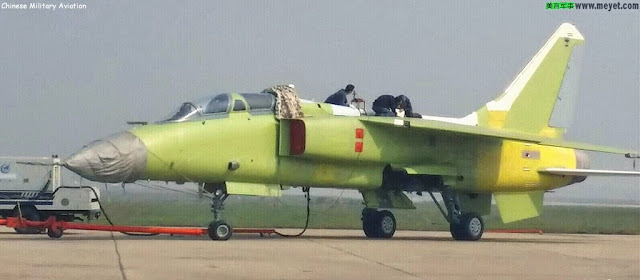 |
| Xian JH-7B fighter bomber |
Indigenous engine has installed an its Xian JH-7B fighter bomber.
The plane has been
designed to be difficult to detect, reports Huanqiu.
A Xian JH-7B that has carried out test flights has been powered by the LM6 turbofan engine designed specifically for the aircraft which boasts more powerful thrust than the country's latest WS-10A engine. The LM6's air intake has been designed to be less visible and its exterior is coated with materials that can absorb electromagnetic waves. The engine is undergoing fine-tuning in preparation for mass production and the fighter bomber will be installed with new avionics and may use an active phased array radar.
A Xian JH-7B that has carried out test flights has been powered by the LM6 turbofan engine designed specifically for the aircraft which boasts more powerful thrust than the country's latest WS-10A engine. The LM6's air intake has been designed to be less visible and its exterior is coated with materials that can absorb electromagnetic waves. The engine is undergoing fine-tuning in preparation for mass production and the fighter bomber will be installed with new avionics and may use an active phased array radar.
The development of the plane began as early as 1974 after a battle against Vietnam in the Paracel Islands in the South China Sea. The incident prompted Beijing to decide to develop a supersonic all-weather aircraft that could be used by both the navy and air force. Development was slow, however, since a suitable engine for the aircraft could not be found and other countries were unwilling to sell advanced engines to the country.
The Xian JH-7 was China's first aircraft capable of mid-air refueling. Its advanced JH-7A variant has seen service with three navy battalions and three air force battalions.
---------------------------------------------------------------





Post a Comment Blogger Facebook Disqus